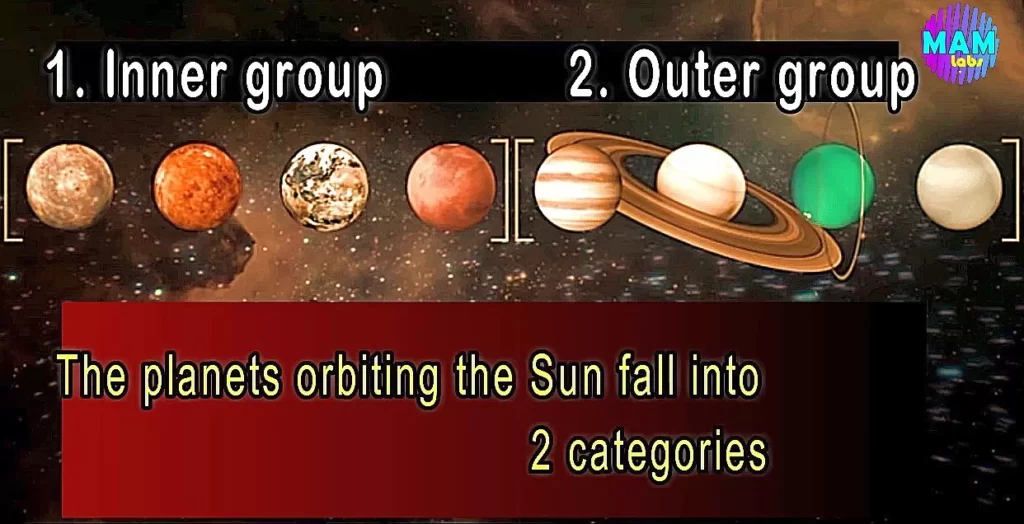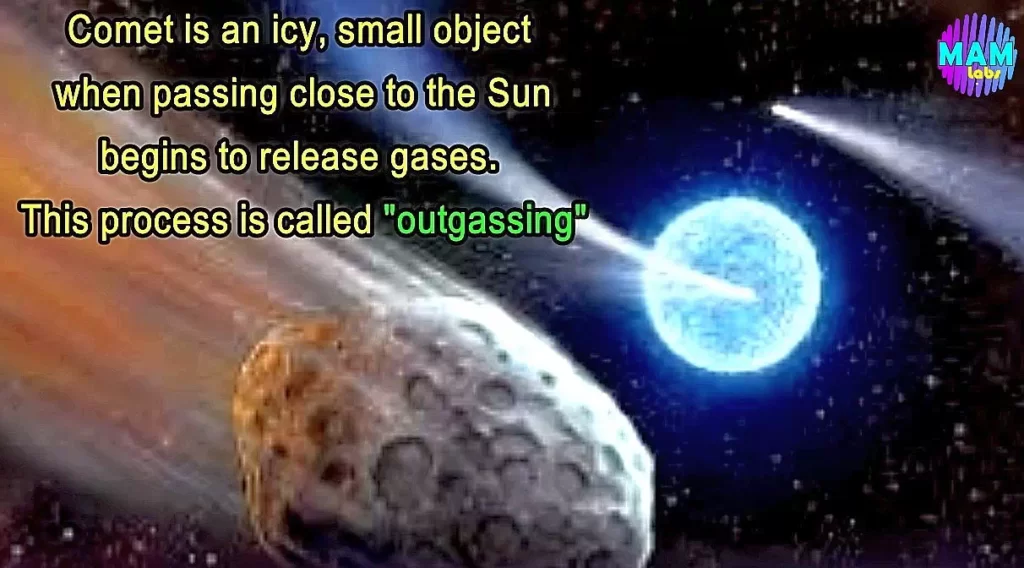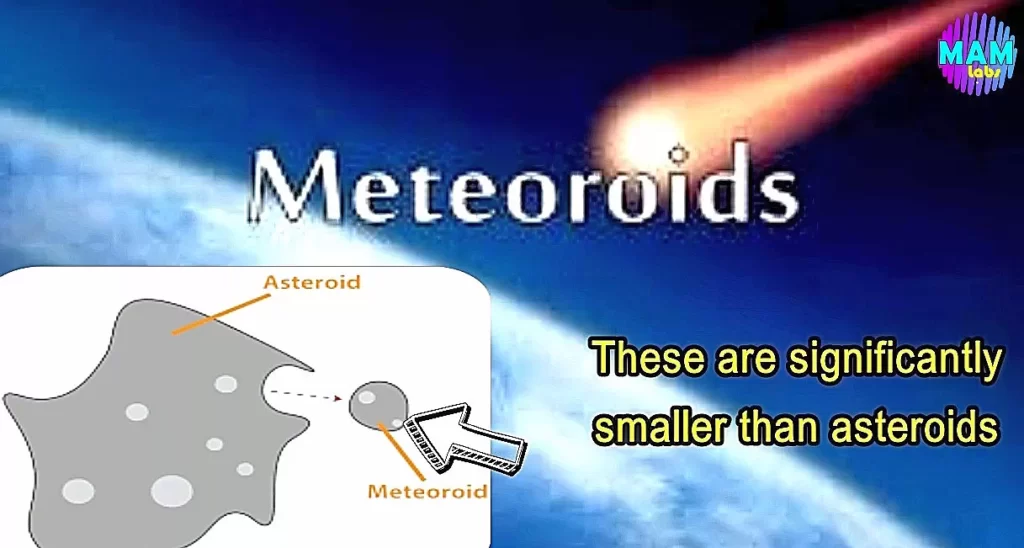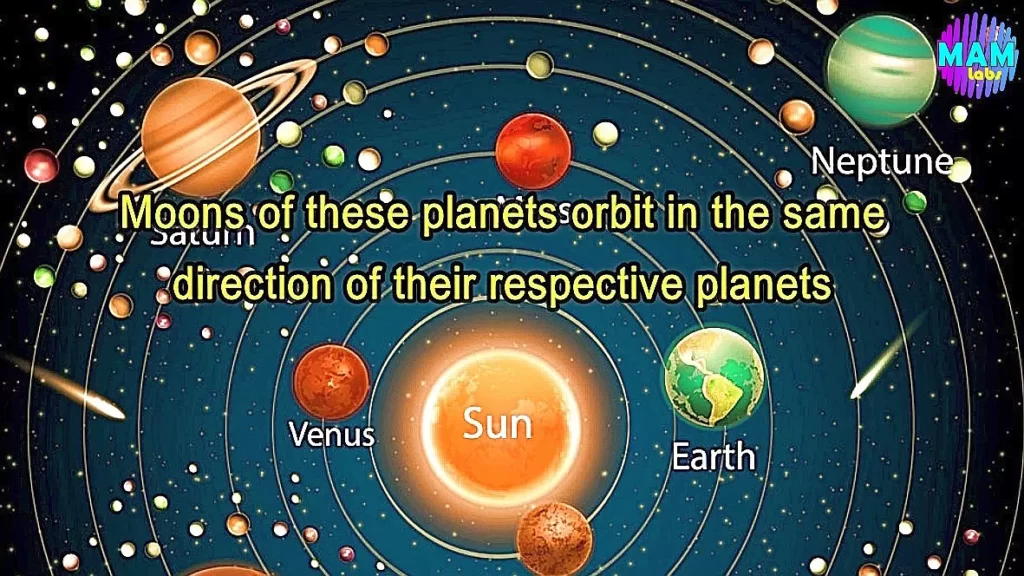The Illustrated Story
The entire Solar System orbits the center of our Galaxy, also known as the Milky Way.
Sun as the central star and planetary and other bodies move around it – is called “Solar System”.
Orbiting bodies round the sun are – 9 planets + more than 200 moons + Asteroids + Comets + Meteoroids + Interplanetary gas and dust.
The planets orbiting the sun fall into two categories:

- Inner Group,
- Outer Group.
Inner group planets also known as Rocky or Terrestrial Planets. These are four in number comparatively smaller and nearer to the sun.
These are Mercury, Venus, Earth, and Mars. They contain small rocks.
Outer group planets: These are four in number and are called as Gas Giants because they contain gas and larger in size, and are far away from the sun, also known as Jovian Group.
These are Jupiter, Saturn, Uranus, and Neptune.
Pluto does not belong to any group. It’s a very small, solid and icy planet and outermost of the solar system. It sometimes passes inside the Neptune’s orbit. These are the reasons why some disagree to consider Pluto as Planet.
Moons of Solar System:

Virtually every planet in the solar system has moons. The list of officially named are given below.
| Earth | 1 moon |
| Mars | 2 moons |
| Jupiter | 67 moons |
| Saturn | 62 moons |
Asteroid Belt:

It contains thousands of chunks of rock moving around the Sun as minor planets.
It lies between the inner group planets and the outer group planets.
Comets:

These have been observed and recorded since ancient times by many cultures. Comet is an icy, small object when passing close to the sun begins to release gases. This process is called “Outgassing”.
It is visible like a ‘Coma,’ sometimes with a tail. They travel in highly eccentric elliptical orbits.
Meteoroids:

These are significantly smaller than asteroids. Meteoroid is a small rocky or metallic body in outer space. When a Meteoroid enters the earth’s atmosphere, it becomes visible and is called as Meteor and hits the earth’s surface as a Meteorite.
Interplanetary dust:

Interplanetary dust is believed to come from the surface erosion and collision of asteroids and from comets. When they travel near the sun, they give off gas and dust. That’s why this dust is also called as Micrometeoroids.
All the objects in the solar system move around the sun in elliptical orbits. The shape of these orbits is located in a thin disc around the sun’s equator.
The orbiting direction of all planets is anticlockwise when viewed from above. And all these planets spin about their own axes.
One interesting fact is that, the spinning direction of six planets is the same as the orbiting direction, i.e. anticlockwise.
These planets are Mercury, Earth, Mars, Jupiter, Saturn, and Neptune. Other three planets are Venus, Uranus, and Pluto. They spin about in clockwise direction i.e. opposite to their orbiting direction.
Moons of these planets orbit in the same direction of their respective planets.

All Blogs & Vlogs from mamlabs.net

